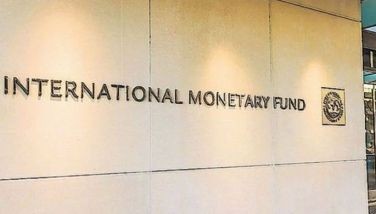The farmer and the scientist

A farmer and a scientist are walking down a trail together. The scientist asks the farmer, “What is the distance from Earth to the moon?” The farmer says he doesn’t know. The scientist says, “Then you have wasted half of your life.”
The two of them continue their walk with the scientist asking the farmer a science question, the farmer not knowing, and the scientist telling the farmer he’s wasted half his life. After a few hours, the farmer and scientist arrive at a beach and see a huge wave rising from the distance. The farmer says, “Do you know how to swim?” The scientist says no. The farmer says, “Then you have wasted your entire life.”
Waves the size of tsunamis are hitting us in full force. Futurists and experts observe that the nature of change today is nonlinear, often manifesting in transformative waves. Each wave brings significant shifts that profoundly reshape our world, influencing technology, culture and society. This pattern reflects the complex and dynamic nature of modern advancements, where innovations and societal shifts do not follow a predictable path but rather emerge in powerful, sweeping movements that alter the landscape of our existence.
These metaphorical waves mark history itself – the rise and fall of empires, the spread of religions and bursts of commerce. Many of these changes may have begun as small ripples, gradually gaining momentum, but they have now surged into powerful waves that sweep across vast regions of the earth. Today, change no longer arrives in slow, incremental ripples; instead, it comes in relentless, successive waves, each with a significant and immediate impact.
These waves also symbolize the progression of technologies, continually reshaping our world. Every significant technological advancement has followed the pattern of becoming more accessible and widespread. As inventors, entrepreneurs and leaders push forward, we see an “ecosystem of invention” that thrives on expansion and innovation.
Today, we stand at the threshold of a new wave—a convergence of technology and life. This wave promises to redefine our reality, bringing unprecedented changes affecting every aspect of our lives. Like the scientist and the farmer in our story, some individuals are keenly aware and adept at navigating change. In contrast, others remain in denial, ignorant, or resistant to the transformative forces reshaping the world.
A well-known global tech company invited me to deliver the keynote at a conference featuring prominent figures from the business and academic sectors. The sponsoring company requested that I discuss artificial intelligence from the perspectives of both a user and an entrepreneur, focusing on how this technology impacts and benefits me.
I highlighted how ignoring technological advancements can affect businesses, personal careers and professional productivity. After my talk, an academic leader approached me and admitted, “I never realized the profound impact that AI and emerging technologies could have, as you described. Hearing it from a layperson rather than a technical expert made it much easier for me to grasp the concepts.” I was not surprised.
Every major technological innovation has encountered both enthusiasm and skepticism.
In 1876, Western Union dismissed the telephone as a “toy.”
In 1943, IBM’s Thomas Watson said, “I think there is a world market for maybe five computers.”
In 1995, Newsweek published an article arguing that the Internet was just a fad.
These examples seem laughable now, but they’re part of a long history of skepticism about new technology.
FROM B3
Today, we’re seeing the same pattern with AI. Research in Britain shows that 89 percent of workers who use AI daily experience productivity gains, compared to only 39 percent of those who use it monthly. Regular AI usage boosts productivity, making it crucial to overcome initial skepticism and encourage consistent use.
Skepticism is notably higher among individual contributors than executives, who often recognize AI’s strategic benefits. This gap highlights the need for leaders to communicate AI’s value and effectively involve their employees, but many falter in this area.
In a rush to embrace AI, some leaders mandate its use without considering employee readiness or addressing their concerns. This top-down approach usually backfires and increases resistance rather than acceptance. Another misstep is crafting AI strategies without involving their people – across all levels. When AI initiatives are designed by a select group of executives or IT specialists (scientists) without input from end-users (farmers), they often fail to meet the practical needs of those using the technology daily.
Implementing AI is more than just acquiring new technology; it requires cultivating the right mindset throughout the organization and changing perspectives. A simple demonstration convinced the academic leader to confess her fear and skepticism of AI: I put on my smart glasses and showed the audience how AI works for me. It changed her perspective. I was delighted that a farmer like me could convince the scientists in the room.
Francis Kong’s “Inspiring Excellence” podcast is now available on Spotify, Apple, Google, or other podcast streaming platforms.
- Latest
- Trending





























